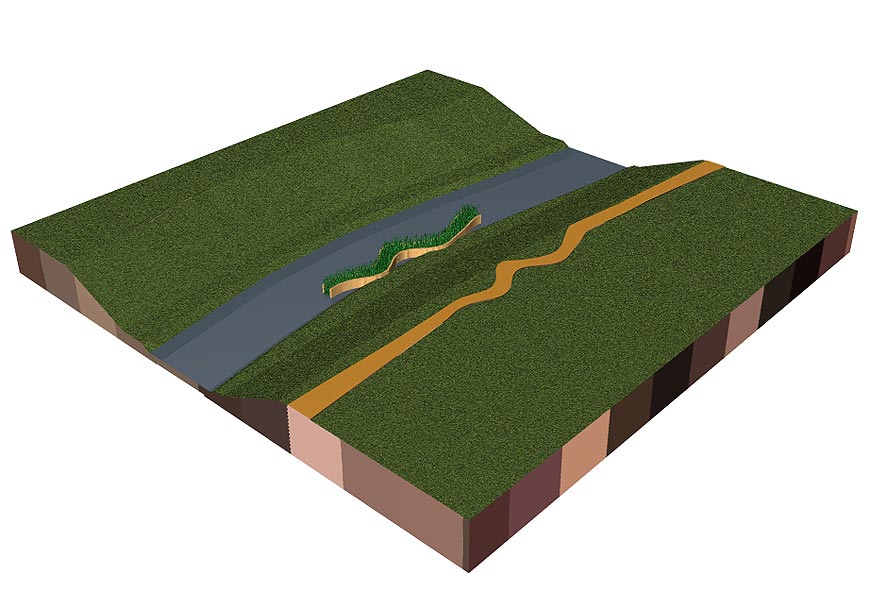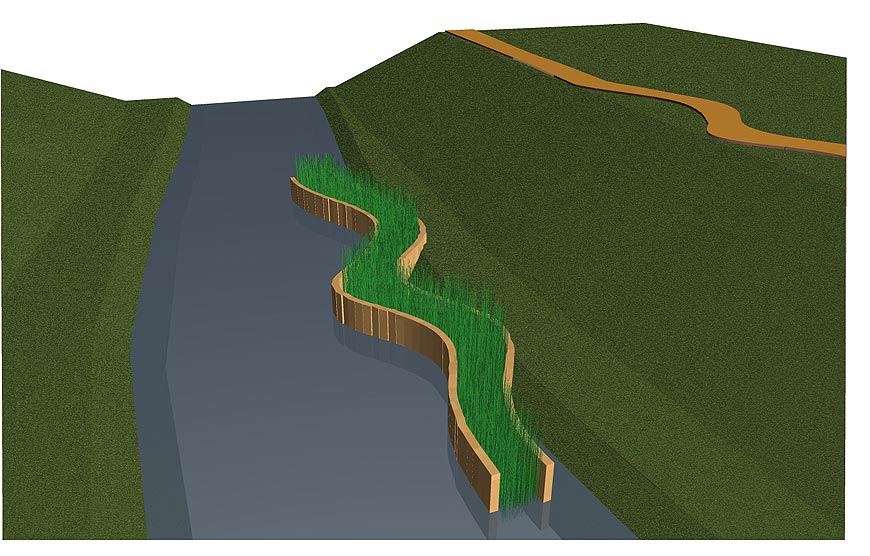Line of Beauty / Das fünfte Klärwerk (5th Wastewater Treatment Works) – 2009
Biofilter; permanent installation on the River Seseke near Kamen; due for completion in 2010. Exhibition: “Über Wasser gehen”.
In cooperation with biologist Dr. Stephan Pflugmacher


The historical River Seseke at the site before straightening for use as wastewater canal.
To improve its functioning as a wastewater canal, the formerly meandering River Seseke was forced into a straight concrete bed in the 1920s. Since 2005, it is being freed from this corset and now flows as a naturalised river in a new bed that is artificial but close to nature. To the still-visible recent historical stratum of the course of the straight wastewater canal, Line of Beauty – das fünfte Klärwerk adds an older component, a reduced-scale segment of the River Seseke near Aden Mill as it was before straightening in 1920.
Line of Beauty
With their curved lines, the river’s new bed and the segment of its historical course appear to compete for the favour of natural form. The title Line of Beauty (from William Hogarth, English painter and printer, 1697-1764) refers to the search for a visible formula for nature. From the 18th century, it was curves rather than symmetry or straight lines that came to epitomise the aesthetic form of nature.

5th Wastewater Treatment Works
Line of Beauty supplements the effect of the four existing water treatment works on the River Seseke, which are unable to ensure adequate water quality. The fifth treatment unit is a biofilter between the outlines of the historical river segment planted with suitable native water plants which clean the river water. Over the years to come, the plants will spread out along the Seseke, making a long-term contribution to the river’s naturalisation.
Beauty and utility
Line of Beauty – das fünfte Klärwerk adds a third layer to the historical strata of the River Seseke: state before 1920; wastewater canal; renaturised river. In the tradition of a concept dating back to classical antiquity, Line of Beauty – das Fünfte Klärwerk links beauty (form) with utility (water purification). In spite of this long tradition, the form of beauty is something that remains subject to controversy. Is beauty the visibly manmade: the straight alley of a Baroque garden, the canal as an expression of the engineer’s ingenuity? Or is beauty the natural, a category itself requiring further definition: a naturally occurring form, a form constructed on the basis of natural parameters, or an artificial form becoming natural?
































































































